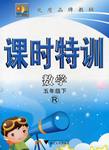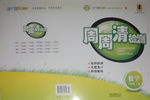题目内容
“One thing I enjoy about my job is that I can work on something that is actually active,” says Game McGimsey, an American volcanologist(火山学家). Part of his job includes keeping an eye on Alaska’s many active volcanoes and giving people a heads-up when a volcano might erupt(喷发).
Like most jobs in the science, volcanology requires a lot of education. McGimsey received an undergraduate degree in geology at the University of North Carolina, then landed an internship(实习期) with a geologist at the USGS(美国地质勘探局) whose work field was about volcanoes. After earning a graduate degree at the University of Colorado, McGimsey accepted a job with the USGS and has been with the Alaska Volcano Observatory for 25 years.
Volcanoes can influence the world in ways we might not think about. For example, on Dec.15 1989, a 747 jetliner (a large airplane) flew through a thick ash cloud produced by Mount Redoubt, an Alaskan volcano that hadn’t erupted in 25 years. The ash caused all four engines to die, and the plane’s electronics went dead.
“The plane was within several thousand feet of flying into the mountains below when the pilots got a couple of engines restarted and landed safely in Anchorage,” McGimsey says. It cost nearly $80 million to repair the damage to the plane.
Such situations show just how dangerous volcanoes can be. However, volcanologists know the risks and are prepared to protect themselves.
McGimsey admits, “There is certainly a higher danger level in volcanology than some other jobs. We understand how serious the danger is, and we don’t like taking unnecessary chances. We avoid getting too close to an erupting volcano, because it is not worth injury or death simply to get a rock or a photograph.”
1. Before working for the USGS, McGimsey ________.
A. had been a pilot for 25 years
B. knew nothing about the organization
C. had taught at the University of North Colorado
D. had studied at the University of Colorado
2. On Dec.15,1989, a 747 jetliner ________.
A. had all its engines restarted
B. flew into a volcano in Europe
C. survived an air accident luckily
D. disappeared in a huge ash cloud
3. What McGimsey says in the last paragraph shows his ________.
A. pride B. carefulness
C. loneliness D. doubt
4. What would be the best title for the text?
A. Game McGimsey: a man of his word
B. Game McGimsey: a volcano watcher
C. The eruption of Mt Redoubt
D. Lost land of the volcano
 名牌中学课时作业系列答案
名牌中学课时作业系列答案 明天教育课时特训系列答案
明天教育课时特训系列答案 浙江新课程三维目标测评课时特训系列答案
浙江新课程三维目标测评课时特训系列答案 周周清检测系列答案
周周清检测系列答案
